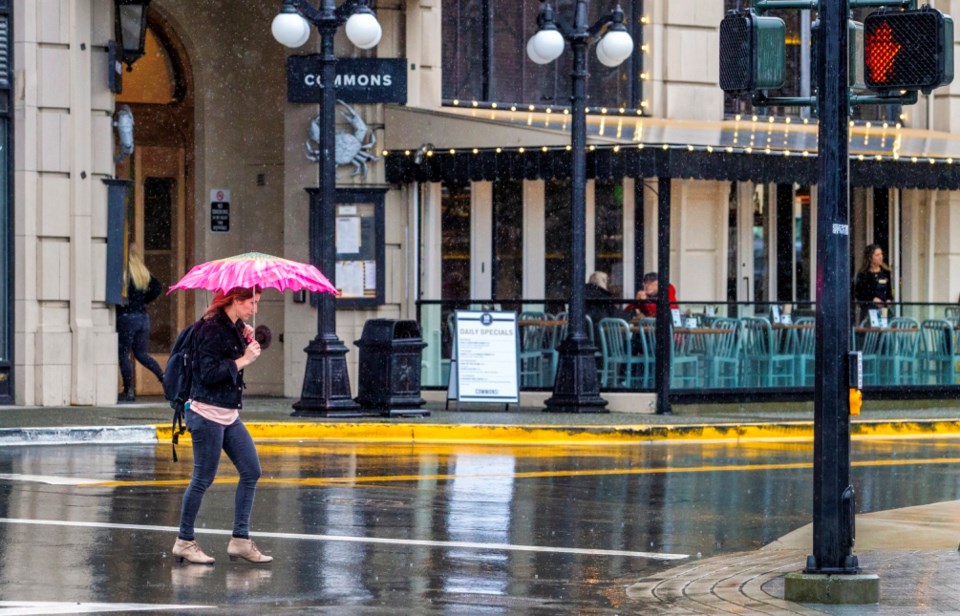Environment Canada is warning of heavy rain and potentially hazardous driving conditions on Island highways as a strong Pacific frontal system approaches the coast on Wednesday.
Rainfall warnings have been issued for the Malahat and East Vancouver Island between Nanoose Bay and Fanny Bay, the forecaster said. The heavy rain will continue through the day and is expected to end Wednesday evening. A total of 40 to 50 mm of rain is forecast.
There is also the potential for strong gusty winds Wednesday afternoon as the cold front nears.
The rain could result in water pooling and poor visibility on roadways. DriveBC's update on road conditions on Island highways includes heavy snowfall, winter driving conditions, pooled water and heavy rain.
On the mainland, a winter storm warning has been issued for the Sea to Sky Highway from Squamish to Whistler, with snow accumulation forecast to reach up to 50 centimetres by Thursday.
Winter storm warnings are also in effect on the Coquihalla Highway from Hope to Merritt, Highway 3 from Hope to Princeton and from Grand Forks to Creston, and Highway 1 from Sicamous to Golden.
Environment Canada says snowfall in those areas could reach 40 centimetres and may combine with strong gusts to reduce visibility to near zero, and officials are recommending against all non-essential travel until conditions improve Thursday.
Snowfall, winter storm and rainfall warnings are also in place in several other parts of B.C., including Whistler, inland sections of the Central Coast around Bella Coola, and vast stretches of the eastern Interior along Highways 5 and 16 around Valemount.
Environment Canada says the heavy snowfall Tuesday left as much as 30 centimetres on the Sea to Sky Highway, 29 centimetres in parts of Whistler and 23 centimetres at Squamish Airport.
Tips for driving in the rain
“Rain and flooding can challenge even the best drivers,” said Trace Acres, program director for Road Safety at Work, which manages the annual Shift into Winter campaign.
“Reduced visibility, slippery roads, and spray can put people at risk. Any amount of pooling water and puddles can cause you to lose control of your vehicle. You don’t know how deep the water is or what’s hidden beneath the surface.”
Shift into Winter advises motorists to slow down, use winter tires with good tread, make sure wiper blades are in good condition, and make sure lights are turned on.
“Speed limits are set for ideal conditions, not for wet or icy roads, so doing the maximum allowed speed in rainy weather puts you in danger,” Acres said.
Motorists should make sure they drive to conditions, maintain a safe following distance, and avoid using cruise control on very wet roads to reduce the risk of hydroplaning, he said.





